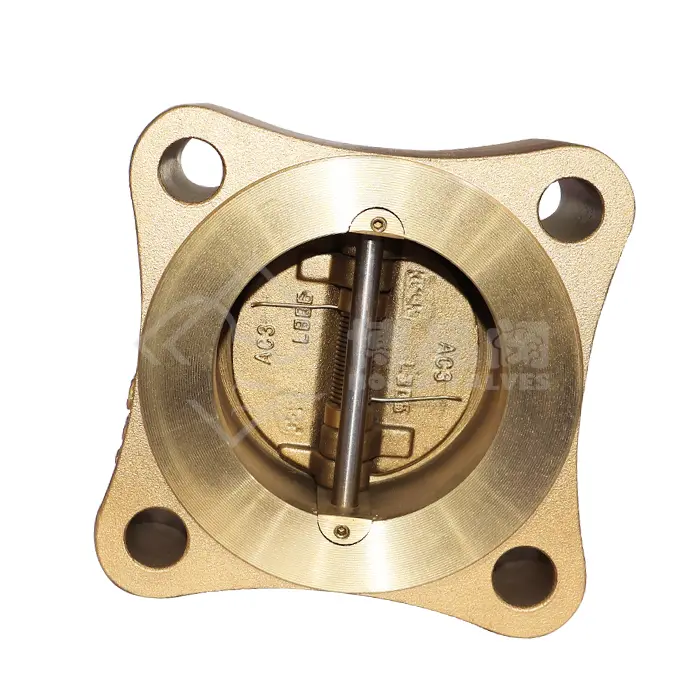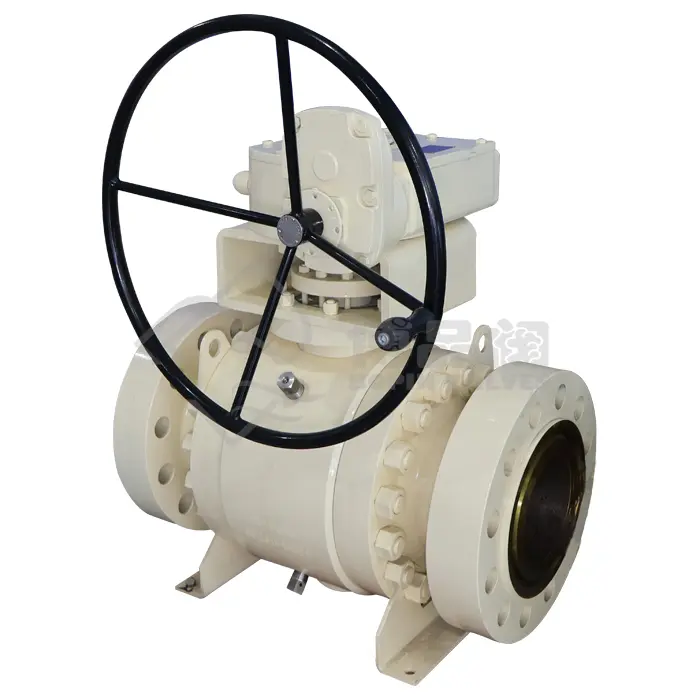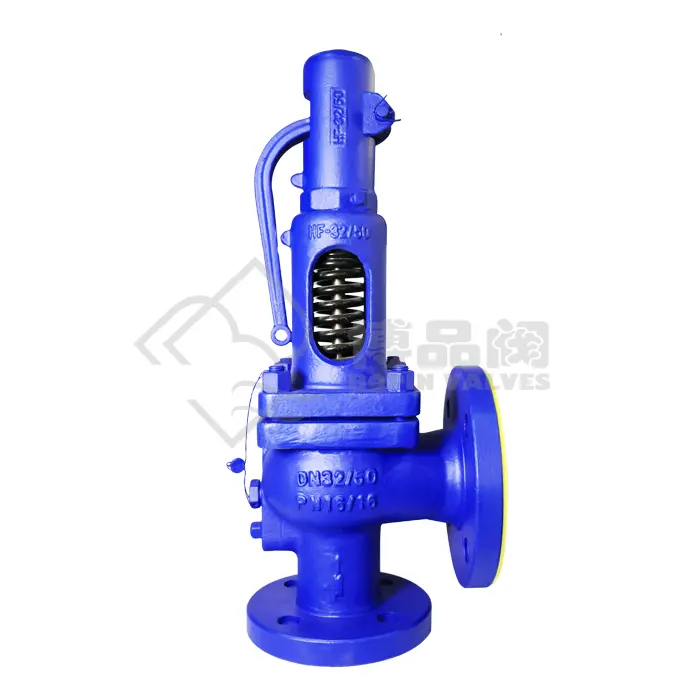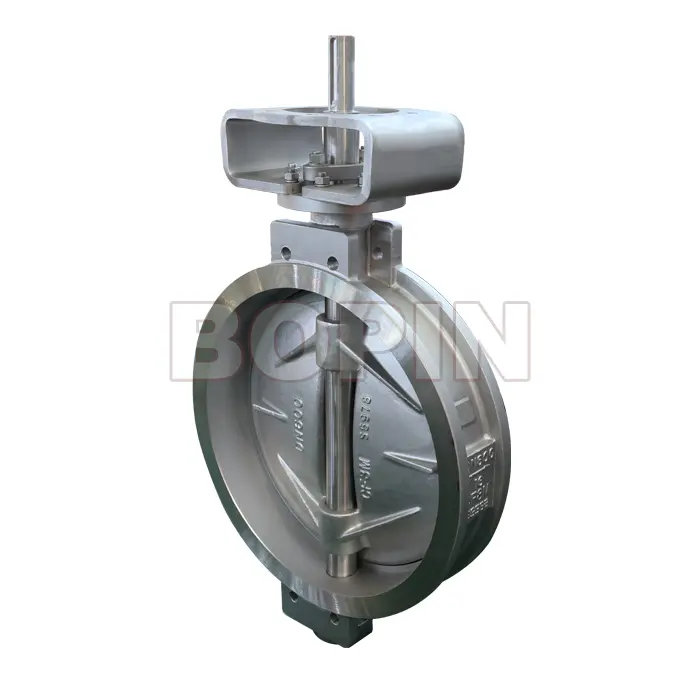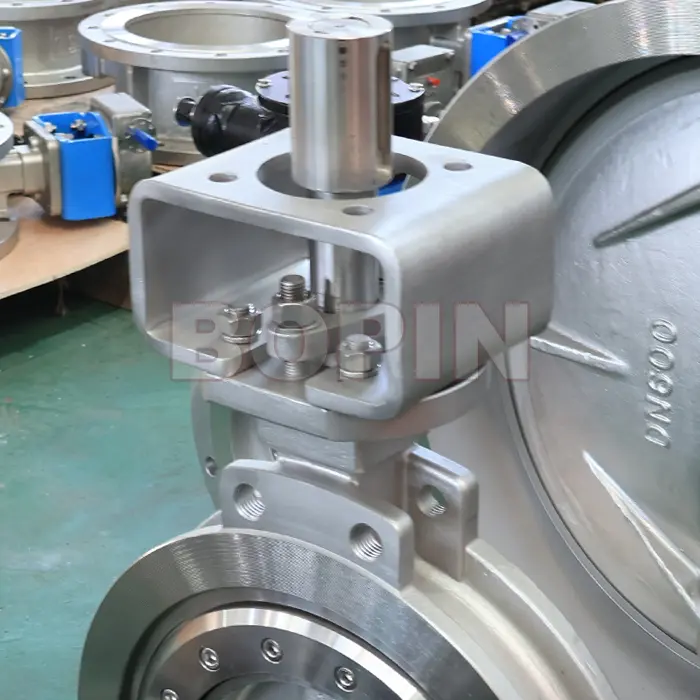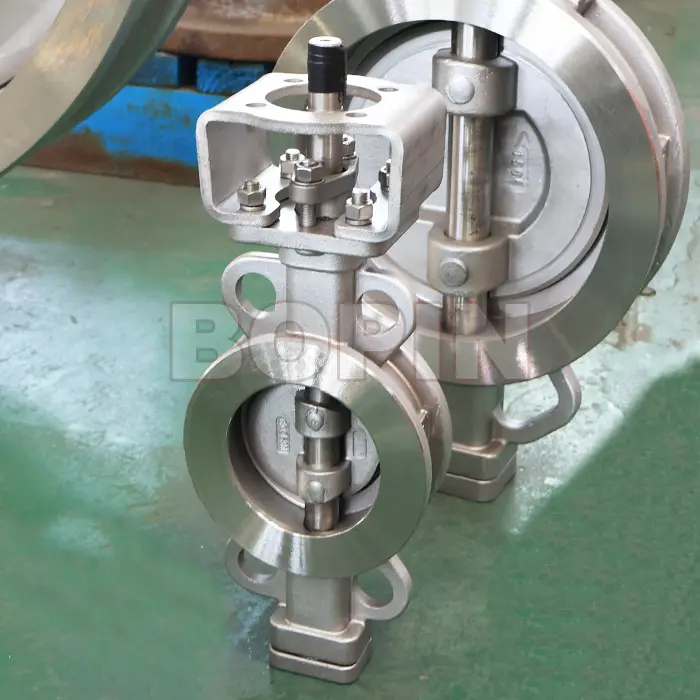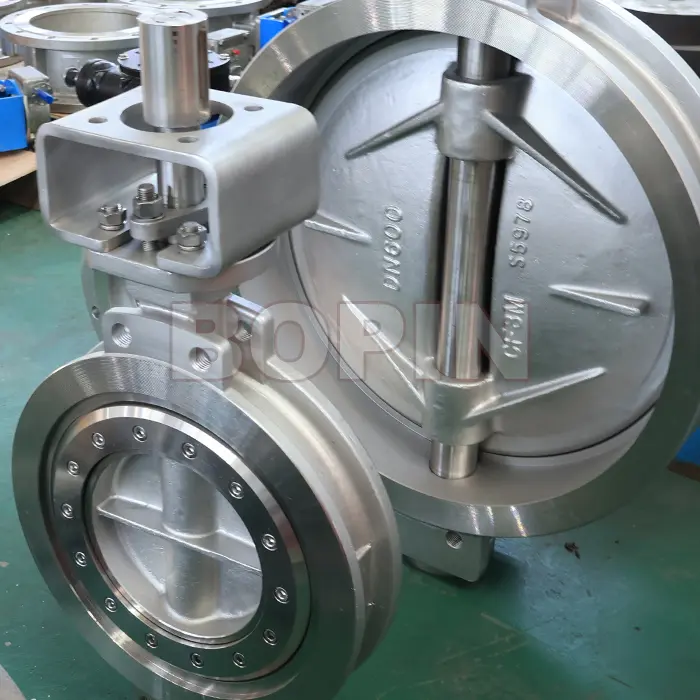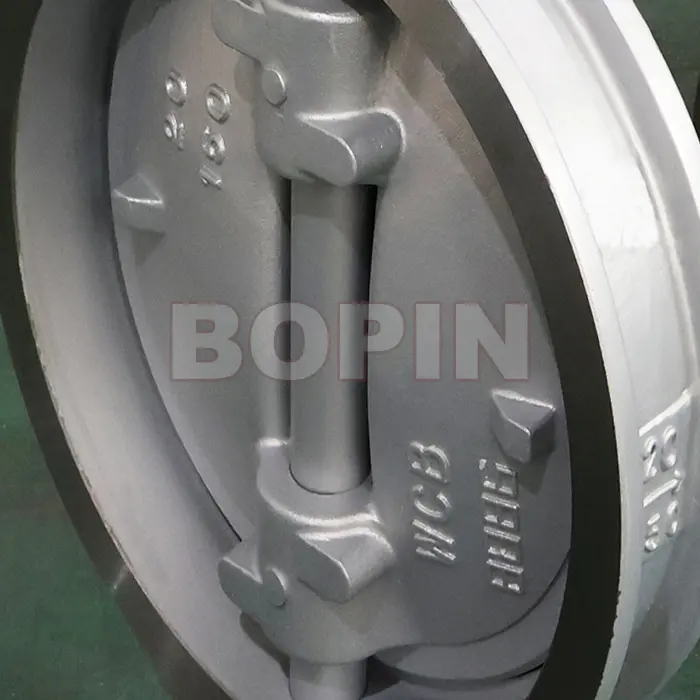0102030405
API 609 Stainless Steel Wafer Type Eccentric High Performance Butterfly Valve
What’s API 609 Standard
API 609 is a standard issued by the American Petroleum Institute (API) that governs the design, construction, testing, and performance of butterfly valves used in pipeline systems. It is specifically focused on valves used in the oil and gas industries, ensuring they meet the stringent requirements for flow control in high-pressure and high-performance environments.
The API 609 standard covers a variety of butterfly valve types, but the wafer-type eccentric high-performance butterfly valve is particularly notable for its versatility and precision. This valve is designed to handle higher pressure, temperature, and fluid flow conditions than standard butterfly valves, making it a preferred choice in many critical applications.
Key Features & Design
Wafer Type Construction
The wafer-type butterfly valve features a compact and lightweight design, typically designed to fit between two flanges in a pipeline. Unlike lug-style valves, which are designed to be bolted to the pipeline, the wafer-type valve is placed in the middle of two pipe flanges and held in place with bolts. This design reduces the weight of the valve and simplifies installation, making it ideal for tight spaces and areas where weight savings are essential.
Eccentric Design
An essential feature of the eccentric high-performance butterfly valve is its eccentricity, which refers to the off-center positioning of the valve’s shaft relative to the disc. In conventional butterfly valves, the shaft is centered, which can cause wear and seat damage when the valve operates, especially under higher pressures.
In contrast, an eccentric valve has a shaft offset from the center of the disc, meaning the valve's disc moves in an angular path rather than a purely rotational one. This creates a more efficient sealing action by moving the disc away from the seat as it opens, which reduces seat wear and minimizes friction during operation.
An essential feature of the eccentric high-performance butterfly valve is its eccentricity, which refers to the off-center positioning of the valve’s shaft relative to the disc. In conventional butterfly valves, the shaft is centered, which can cause wear and seat damage when the valve operates, especially under higher pressures.
In contrast, an eccentric valve has a shaft offset from the center of the disc, meaning the valve's disc moves in an angular path rather than a purely rotational one. This creates a more efficient sealing action by moving the disc away from the seat as it opens, which reduces seat wear and minimizes friction during operation.
The eccentric movement has three key components:
Concentric (1st Eccentricity): The shaft is offset from the valve centerline, causing an initial separation between the disc and the seat.
Excentric (2nd Eccentricity): The disc rotates off-center, making contact with the seat at specific angles for a better sealing effect.
Tri-Eccentric (3rd Eccentricity): In high-performance designs, the disc and seat geometry is further refined to achieve optimal sealing and torque reduction, often allowing for a better shut-off performance under varying pressures.
This eccentricity results in smoother operation, longer valve life, and reduced wear, making it ideal for applications where precise control and durability are essential.
Material Construction of Stainless Steel
The stainless steel construction of the valve body, disc, and components provides enhanced strength, corrosion resistance, and longevity. Stainless steel, particularly grade 304 or 316, is commonly chosen for applications where the valve may come into contact with corrosive or abrasive fluids, such as acids, chemicals, or seawater. The properties of stainless steel make it suitable for high-performance, high-pressure environments.
Key benefits of using stainless steel include:
Corrosion Resistance: Stainless steel is highly resistant to rust, corrosion, and chemical degradation. This property is crucial in industries like petrochemical, pharmaceutical, and food processing.
High Temperature Tolerance: Stainless steel can withstand high temperatures, making it suitable for steam, high-temperature water, and other thermal processes.
Strength and Durability: Stainless steel provides excellent tensile strength and is capable of withstanding the mechanical stress of high-pressure systems.
This material ensures that the valve can maintain its integrity in the face of harsh conditions, reducing the likelihood of leaks, damage, and downtime.
Features of High-Performance
The high-performance butterfly valve design incorporates several features that differentiate it from standard butterfly valves, making it suitable for challenging applications. These features include:
Precision Sealing: The eccentric design ensures that the sealing action is uniform and precise. The disc’s motion is optimized to ensure a leak-tight seal, even under extreme operating conditions. This is particularly important in critical applications where fluid leakage can cause operational disruptions or safety hazards.
Low Torque: Because of the eccentric mechanism, the valve requires less torque to operate, even under high pressure. This makes it easier to automate the valve, as less power is needed for opening or closing the valve. The low torque requirement also extends the lifespan of the valve components.
Wide Range of Sizes and Pressures: These valves can be designed for a variety of pipeline sizes and pressure classes, ranging from low-pressure to high-pressure systems. This versatility allows them to be used in numerous applications, from industrial fluid control to municipal water systems.
Tight Shut-Off Capability: The combination of the eccentric design and the sealing characteristics of the stainless steel body results in an excellent shut-off performance, ensuring no leakage when the valve is fully closed.
Operating Principle
The operating principle of a wafer-type eccentric high-performance butterfly valve is based on the rotation of a disc that is connected to an eccentric shaft. As the valve is rotated, the disc moves into or out of the flow path, regulating the flow of fluid through the valve.
Opening the Valve: When the valve actuator or manual handle rotates the disc, the eccentric design causes the disc to move away from the seat as it opens. This minimizes friction and reduces the risk of damaging the sealing surface.
Flow Control: The disc’s movement, combined with the sealing action, allows for precise flow control. The eccentric disc remains well-separated from the seat during opening and closing, reducing wear on both the disc and the seat.
Shutting the Valve: As the valve closes, the disc contacts the seat in a controlled manner, ensuring a tight shutoff with minimal effort.
This operational principle is key to the valve’s ability to perform efficiently under varying flow rates and pressure conditions, while maintaining durability.
Applications of the High-Performance Butterfly Valve
Given the versatility and high performance of the API 609 Stainless Steel Wafer Type Eccentric High-Performance Butterfly Valve, it is widely used across multiple industries:
Oil and Gas Industry: These valves are frequently used in upstream, midstream, and downstream oil and gas applications, including refineries, gas transportation pipelines, and oil production facilities. Their ability to handle high pressure and corrosive fluids makes them ideal for these environments.
Water and Wastewater Treatment: The valve’s precision and reliability make it a key component in water treatment plants, where it controls the flow of treated and raw water.
Chemical and Petrochemical Processing: The corrosion resistance of stainless steel allows these valves to be used in the chemical industry for controlling the flow of aggressive chemicals and fluids.
HVAC Systems: In large-scale HVAC systems, these valves are used to regulate the flow of water or air, ensuring the proper functioning of heating, ventilation, and cooling systems.
Power Generation: In power plants, these valves control steam, water, and other fluids in turbines, boilers, and cooling systems, where precision and efficiency are essential.
Maintenance and Operational Considerations
For the API 609 Stainless Steel Wafer Type Eccentric High-Performance Butterfly Valve to operate efficiently and last a long time, proper maintenance and operational care are necessary:
Regular Inspections: It is important to regularly inspect the valve for any signs of wear or corrosion, especially in aggressive environments. This includes checking the valve disc, seals, and body.
Lubrication:
Ensure that the moving parts, including the shaft and actuator, are properly lubricated to prevent friction and premature wear.
Seat Inspection: Inspect the valve seats for any signs of damage or erosion. The integrity of the seat is crucial for maintaining a tight seal and preventing leaks.
Valve Calibration: Periodically check the valve’s calibration to ensure it opens and closes smoothly, with the correct torque and sealing.








